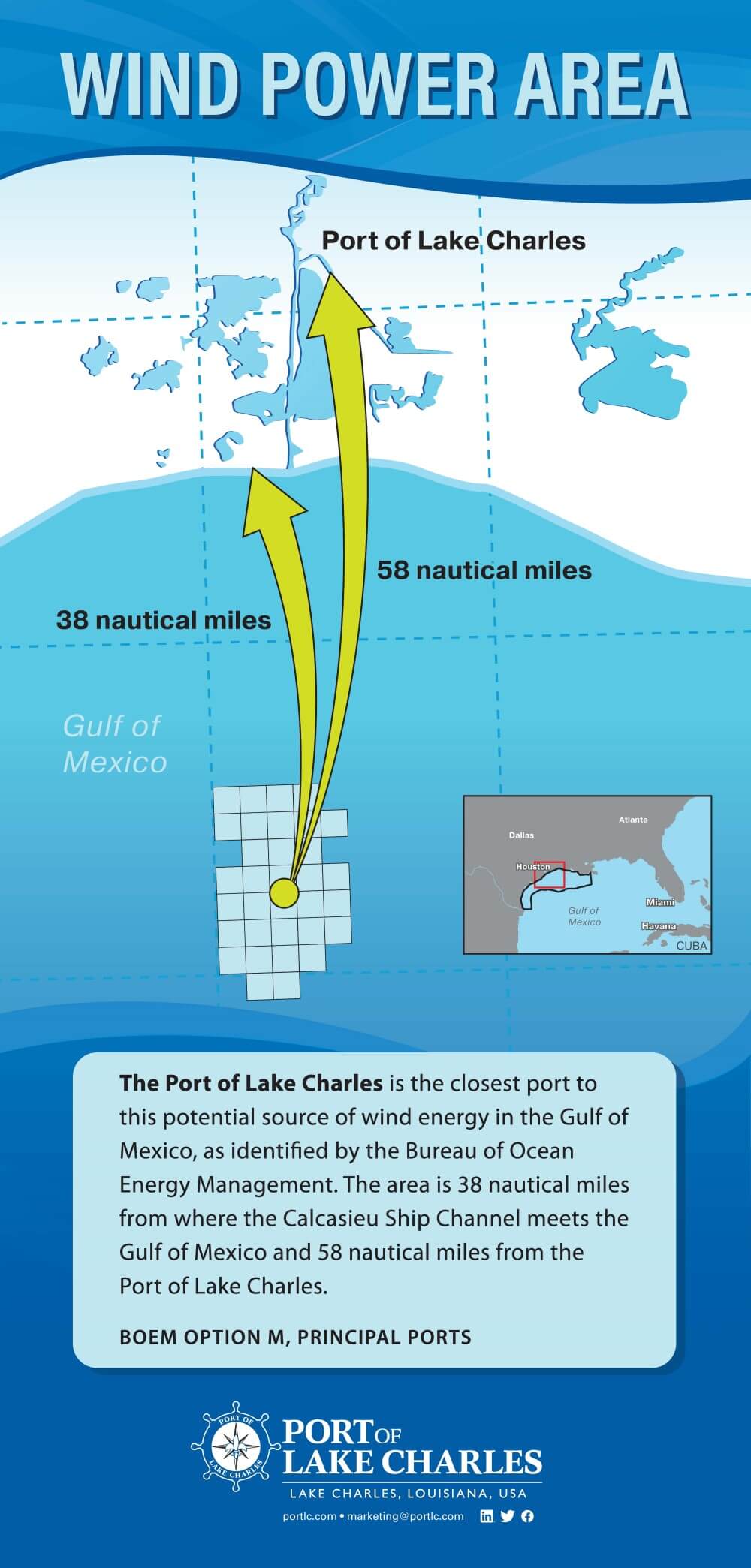The Gulf of Mexico WEA Designation
The U.S. Interior Department’s Bureau of Ocean Energy Management (BOEM) has designated a Gulf of Mexico site just south of the Port of Lake Charles as a wind energy area (WEA) — a major step in identifying wind lease areas in the Gulf.
The designated area is 56 nautical miles south of where the Calcasieu Ship Channel crosses the Cameron Parish coast. It is located above the Gulf outer continental shelf (OCS).
It is part of the 30-million-acre “call area” designated in November 2021.
With design adaptations for waves and wind loading, the designated Gulf area south of the Port of Lake Charles can be an ideal location for wind power.
Advantages for the Offshore Wind Industry
As Maritime Executive magazine has reported, there are multiple natural advantages for the offshore wind industry, including:
- A skilled workforce for fabricating, installing and servicing offshore infrastructure.
- A broad shallow shelf, suitable for cheaper bottom-fixed wind development.
- Benign average wave heights.
- A supply chain of shipyards, OSV operators and port facilities.
Major wind developers have already expressed interest in investing in Gulf wind leases.
BOEM used the most current scientific data to analyze the entire call area to find the best spaces for wind energy development.
The call area covers a vast swath of the western Gulf of Mexico and includes almost all federal waters between the U.S. maritime boundary with Mexico and the Mississippi Delta.
The area for review totals 190,000 acres and has the potential to power 800,000 homes, according to the Interior Department.
The BOEM identified two wind energy areas on the Gulf OCS. The other is southeast of Beaumont, Texas.
The future wind leases — which have already been taking place along the Atlantic and Pacific seaboards —are an expanded initiative by the U.S. Department of the Interior.
The Port of Lake Charles has the ideal location, capacity and expansion capability for wind lease operations.


